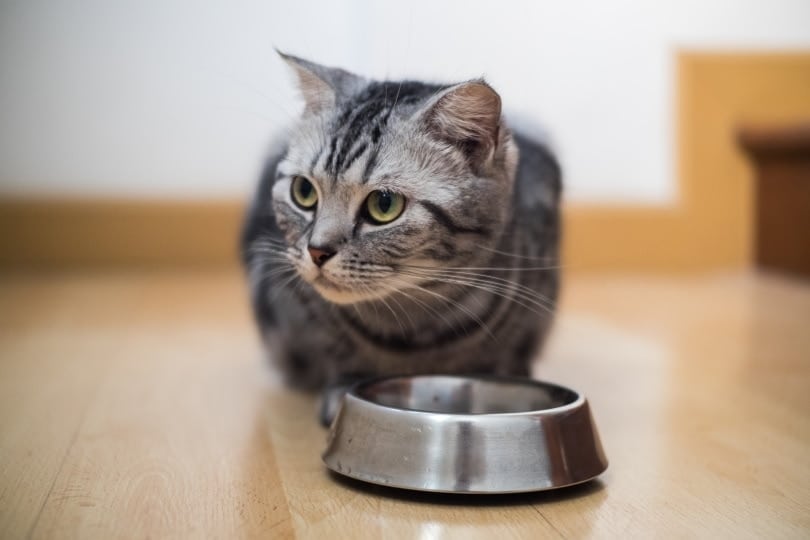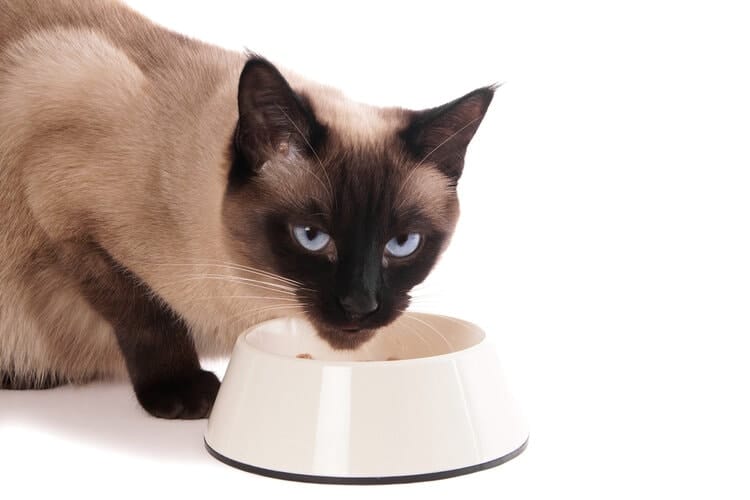Chocolate is well-known for being toxic to dogs, and most cat owners know it is toxic to cats, too. If you are familiar with carob, a natural substitute for chocolate, you may be wondering if it also comes with those dreaded toxic effects.
Like chocolate, carob is derived from a plant, but carob does not pose the danger of toxicity in the way that chocolate does. So, if your cat has ingested a carob chocolate substitute, you do not have to worry about them being poisoned. Below, we’ll go over the ins and outs of carob and take a closer look at whether it’s healthy for cats.
 What Is Carob, Exactly?
What Is Carob, Exactly?
The carob is a flowering evergreen tree that is native to the Mediterranean and the Middle East. The tree is often used as an ornamental for landscaping, but it is also widely cultivated for its pods, which is where the chocolate substitute comes from.
The carob fruit resembles a brown-colored pea pod and includes pulp and seeds. It has been used as a health food for centuries, and its use has been traced back to ancient Greece. Nowadays, carob is commonly used and grown all over the world. It can be purchased as a powder, chips, extract, and syrup and is a dietary supplement.
When carob is used as a chocolate substitute, the powder is a replacement for cocoa powder and can be used in various recipes or turned into carob chips. Carob gum is also a common food additive that works as a gelling and thickening agent.
Health Benefits of Carob (for Humans)
Carob has some pretty impressive health benefits for humans, which is another reason it is beloved among chocolate lovers looking for a healthy alternative. Here’s a look at some of the health benefits and advantages carob has to offer:
- Low in sodium
- Low in fat content
- Rich in calcium
- High in Fiber
- Caffeine free
- Natural remedy for diarrhea
- Rich in antioxidants
- Gluten-free

What Makes Carob Safer Than Chocolate for Cats?
We know that carob makes a healthy chocolate alternative for human consumption, but when it comes to cats, a few factors are different when comparing it to chocolate, which makes it safe for cats.
Carob lacks the theobromine and caffeine you will find in chocolate. These two substances are highly toxic to cats and are potentially fatal in large amounts, which is why chocolate is considered such a danger to pets. Thankfully, carob shouldn’t cause any issues if your cat eats it.

Is Carob Healthy for Cats?
Just because something is safe for your cat to eat doesn’t mean it’s necessarily healthy for them. Carob is not dangerous, nor does it pose any risk of toxicity for cats, but it’s not something that fits into their natural diet.
Cats are carnivores that get all their nutrients directly from meat sources. A carob is a tree, and cats do not need plants in their diet. Too much plant material can lead to digestive disturbances and cause signs like nausea, vomiting, or diarrhea if consumed in large amounts. There’s no need to supplement your cat’s diet with carob since they do better with a meat-based treat.
Proper Dietary and Nutritional Needs of Cats
Cats are highly evolved hunters that consume most of their prey and get most of their hydration from it. Their diet is high in protein, has moderate fat, and contains minimal carbohydrates. Many years of living with humans have not changed cats’ overall dietary needs. Most commercial cat foods on the market are designed to fit their dietary needs, but some contain higher amounts of carbohydrates and poor-quality meat-based sources, especially dry kibble.
The quality of commercial cat food varies significantly, and it’s important to read labels and check ingredients before deciding on a brand. Feeding your cat high-quality cat food that does not contain harmful chemicals, dyes, or other unnecessary additives is recommended. You can speak to your veterinarian about the best meal plan for your cat since they are up to speed on their current health condition and needs.
Cats should always be provided with fresh, clean water. They can be offered treats occasionally, but it is best to do so in moderation to avoid obesity and related health concerns. Treats should be meat-based and unsalted.

Healthy Treat Options for Cats
- Cooked, unsalted lean meats (small amounts)
- Dried liver
- Pieces of high-quality kibble
- Small bits of wet food
- High-quality commercial treats
 Conclusion
Conclusion
Carob is not toxic to cats and is perfectly safe if ingested. It does not contain theobromine or caffeine, which are the substances in chocolate that make it so toxic to cats and dogs. While carob is safe for cats, it is plant-based and does not fit their usual dietary needs, so there is no reason to serve it to your cat. There are plenty of meat-based treats if you want to give them the occasional snacks or treats.
Featured Image Credit: denira, Shutterstock


 What Is Carob, Exactly?
What Is Carob, Exactly?






